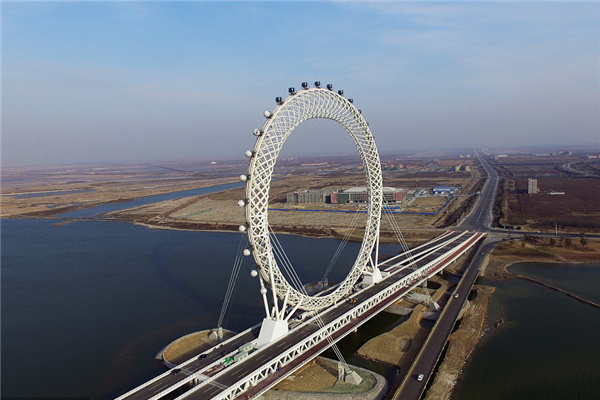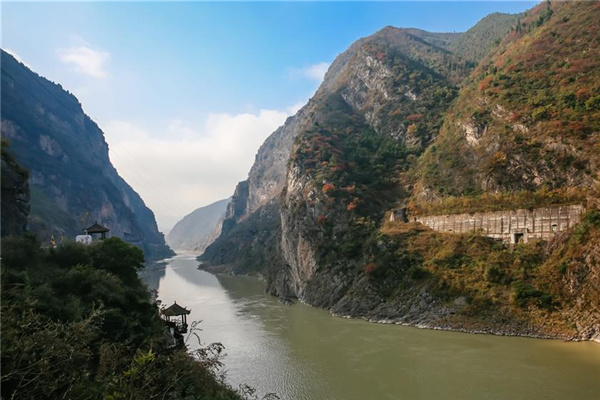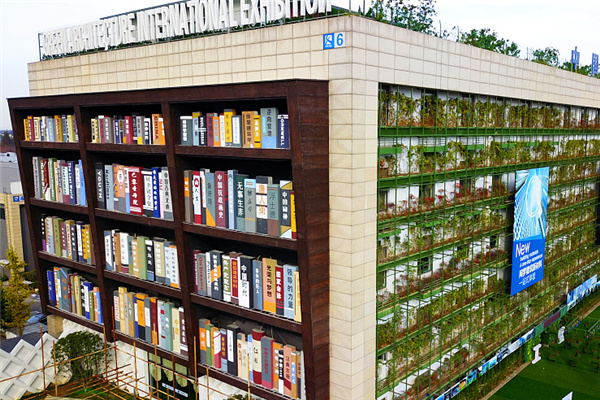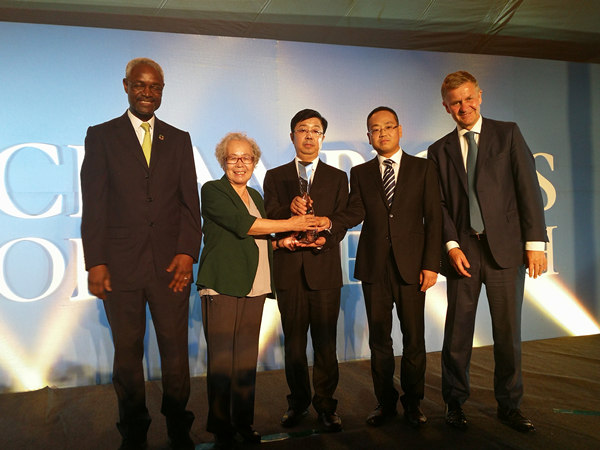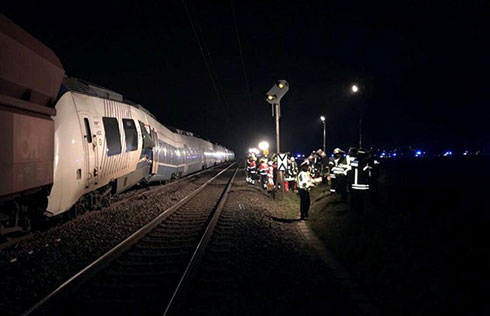

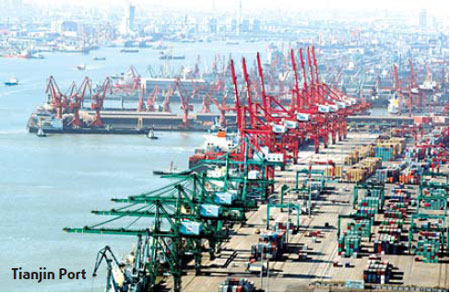
TIANJIN: The largest harbor in north China feels the pain of the current economic turmoil but those behind Tianjin Port say its robust growth will remain unchanged with new approaches to sustainable development.
"Facing the crisis, we grow from simply being a harbor operator to becoming an all-around port developer," says Ou Yonglin, spokesman for Tianjin Port. "We will seek sustainable development in four areas, harbor loading and unloading, harbor logistics, harbor real estate and harbor comprehensive services." Ou spoke on the sidelines during a recent interview organized by the State Council Information Office marking the 30th anniversary of China's adoption of an opening-up and reform policy.
Despite the financial and economic crisis, Tianjin Port will still meet its original target of annual container throughput of 8.5 million twenty-foot equivalent units (TEUs) and cargo throughput of 350 million tons this year, Ou tells China Business Weekly.
The port will also not reduce its long-term expectations, he says. By 2010, Tianjin Port's cargo throughput is predicted to surpass 400 million tons, with a container throughput of 12 million TEUs.
"It is still a conservative growth figure. We will not lower our long-term growth target, we might even raise it," Ou stresses.
Ou is not boasting. His confidence in Tianjin Port is well founded.
Different from regions in south China, the economic inland of Tianjin Port hasn't been as severely impacted by the economic crisis.
Compared to the Pearl River Delta with its low value-added industries, many of which have gone bankrupt or relocated, Tianjin Port will be less severely impacted, Yu Rumin, chairman of Tianjin Port (Group) Co Ltd, contended earlier.
Domestic companies were grabbing more iron ore in the first half of this year, which resulted in Tianjin Port's decent throughput performance. But the whole-year picture is not so rosy.
The industrial output of Tianjin Binhai New Area, where Tianjin Port is located, grew by about 32 percent year-on-year during the first nine months of this year. But the year-on-year growth rate dropped to 25 percent in October, because of the global financial crisis.
Some foreign investors slowed funding new projects, and the harbor has witnessed less trade transactions, Gou Lijun, director of the Tianjin Binhai New Area administrative committee says.
"Although Tianjin Port will meet this year's growth target, we originally expected the harbor to perform even better by having a container throughput of 9 million TEUs. Now we can only hope the harbor will perform better by offering better services," Gou says.
In the future, Tianjin Port plans to set up more water-free ports in inland China to expand its services. The harbor is also gearing up the construction at its Dongjiang Bonded Port Area to create a better trading environment for clients, Ou says.
Currently Tianjin Port has built six inland water-free ports by cooperating with several inland provinces, regions and cities, including Beijing, Shijiazhuang, Henan province, the Ningxia Hui autonomous region, Baotou and Dezhou cities.
Through this approach, Tianjin Port extends its services to inland provinces and shares the advantages with them.
The Dongjiang Bonded Port Area of Tianjin Port is designed to be 10 sq km and the largest one in China. Occupying a space of 4 sq km, the first-phase bonded port area has opened.
It will draw experience from the development mode adopted by international free trade zones, by extending its international transfer, global distribution, international procurement, international trade transit and export processing.
Priorities will go to modern logistics, import-export processing, manufacturing industry and various service industries.
Tianjin Port is also increasing efforts to enlarge its container handling capacity.
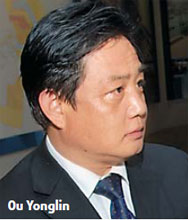
One of the reasons to explain a slower container throughput increase in Tianjin is that the inland area surrounding Tianjin Port is not as developed as in south China areas such as Shenzhen and Shanghai and its container handling capacity is smaller.
"One of our major short comings is the container throughput, which has not grown as fast as we expect. We will put more efforts in driving up our container throughput. Our Dongjiang Bonded Port Area will focus on container throughput growth, once completed," Ou says.
Located at the entrance to the Bohai Sea from the Haihe River, Tianjin Port is a top flight artificial harbor.
In 2007, the port had a cargo throughput of more than 300 million tons, making it the sixth among the major ports in the world, the fourth in China and the top in north China. The container throughput reached 7.1 million TEUs, making the port one of the top 20 container ports in the world.
Tianjin Port is one of the most functional costal ports in China. It has a terminals for containers, iron ore, charcoal , petrochemicals, general cargo, roll-on, roll-off, general grains, general chemical fertilizers, an international passenger terminal and a variety of other specialized terminals.
Tianjin Port also has a strong connection with inland areas, with direct links to 14 inland provinces, cities and autonomous regions including Beijing, Tianjin and Hebei province, covering 5 million sq km, which accounts for 52 percent of the total area of the country.
Approximately 70 percent of the port's throughput and over 50 percent of its import and export value come from provinces and regions other than Tianjin. The port has extensive contacts with the world, establishing sister-port relationship with 12 ports including those in Japan, South Korea, the United States and Holland and does trade with more than 400 ports of more than 180 countries and regions.
(China Daily 12/15/2008 page10)


